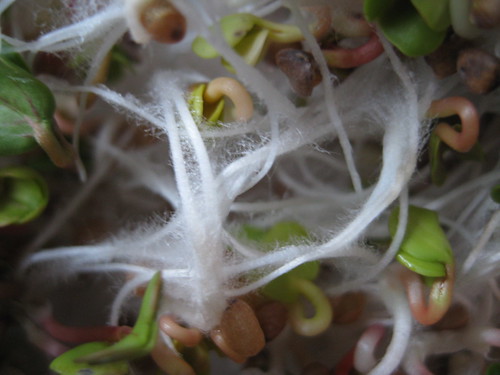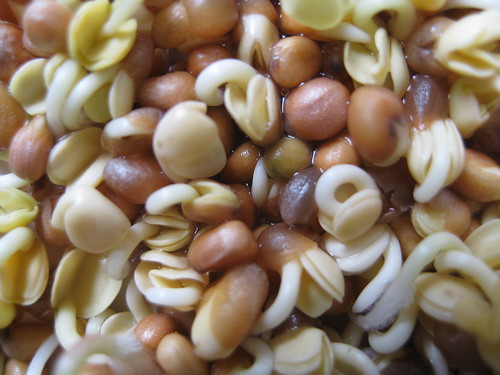Sprouting seeds are a phenomenon of nutrient mobilization that all plants use. The seeds are "programmed" to respond to a fairly precise range of moisture, light, and temperature. When the right combination of conditions is met, the seeds respond by germinating.
The process of germination is complex and it involves all the parts of the seed. As the embryo becomes activated it sends a hormonal message to the region just inside the seed coat, the aleurone layer, which is rich in proteins. Enzymes, which are a type of protein, are released from the aleurone layer. These enzymes digest the starch and other nutrients that make up the bulk of the seed, the endosperm.
Starch in the endosperm is broken down into glucose, which feeds the process of aerobic metabolism in the newly active embryo.
The first thing to emerge is the embryonic root, the "radicle." Nutrients from the soil are absorbed and along with the nutrients from the endosperm, the first leaves emerge from the seed.
The last stage in nutrient mobilization is the development of chlorophyll, a very complex molecule, which is also "expensive" for the new seedling to produce. It's no wonder that seeds are such a good source of nutrition. Everything the embryo needs to start life is stored there.
I wonder what these incredible self-contained structures can tell us about how to design more effective environments for ourselves.



No comments:
Post a Comment